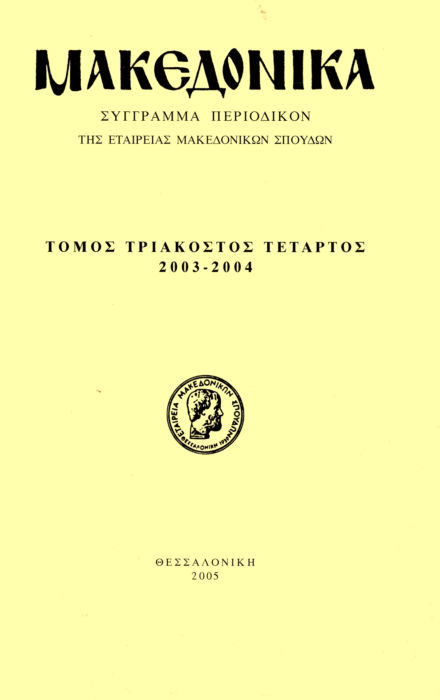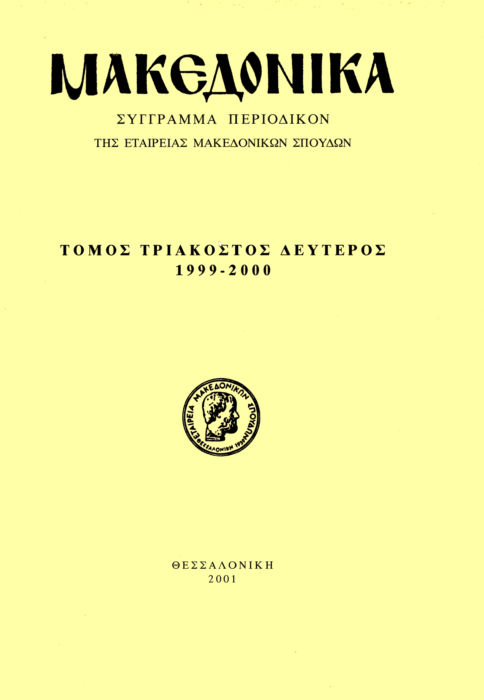Demographic process of Florina (1906-1928)
Abstract
This article aims to present a point of view concerning Fiorina in the first half of the 20th century.
At first the description of the greek-orthodox community of Fiorina (1905), made by the Metropolitan Bishop, named «Anthimos», is used as o source.
In this manuscript the Metropolitan Bishop registers the demographic and professional structure of the neighbourhouds of Fiorina, during the early 20th century.
Another source used is the «Guide of the whole Greek», edited in 1910, which offers us the ability to compare the issues of the two sources, in order to have a complete aspect about the old community of Fiorina.
Finally, an electoral catalogue of 1928 is used as a source in order to give us more information about the refugees, who were installed in Fiorina in many different periods, under different circumstances.
Article Details
- How to Cite
-
Ηλιάδου-Τάχου Σ. (2004). Demographic process of Florina (1906-1928). Makedonika, 34(1), 91–108. https://doi.org/10.12681/makedonika.870
- Issue
- Vol. 34
- Section
- Articles

This work is licensed under a Creative Commons Attribution-NonCommercial-ShareAlike 4.0 International License.
Authors who publish with this journal agree to the following terms:
- Authors retain copyright and grant the journal right of first publication with the work simultaneously licensed under a Creative Commons Attribution Non-Commercial License that allows others to share the work with an acknowledgement of the work's authorship and initial publication in this journal.
- Authors are able to enter into separate, additional contractual arrangements for the non-exclusive distribution of the journal's published version of the work (e.g. post it to an institutional repository or publish it in a book), with an acknowledgement of its initial publication in this journal.
- Authors are permitted and encouraged to post their work online (preferably in institutional repositories or on their website) prior to and during the submission process, as it can lead to productive exchanges, as well as earlier and greater citation of published work (See The Effect of Open Access).





